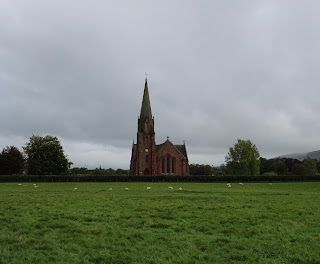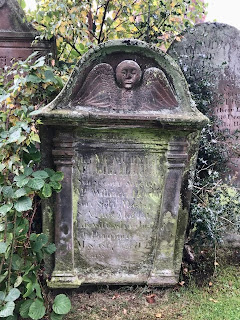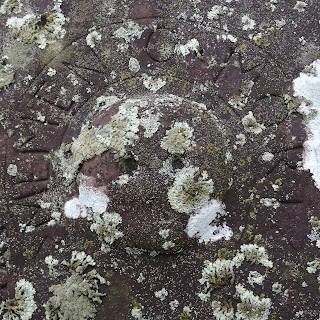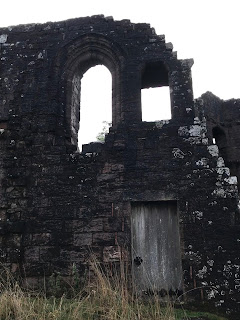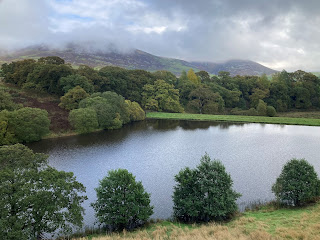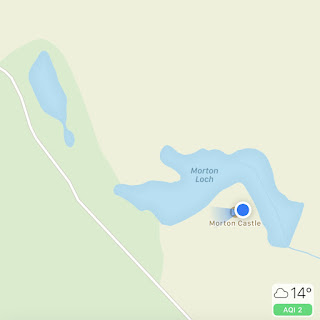It was summer again and so I headed off
on a little summer holiday to sunny Dumfries and Galloway. A rather lovely and somewhat desolate feeling
county, though one with plenty to see and do.
My first stop was back to Wanlockhead – an old lead mining village which
is also the highest village in Scotland.
This is somewhere I visited last year and had also been to several times
before, many decades ago, on trips with the school and also with the family of
a friend. A family who were massively
into wild camping (though we just called it camping back in the Seventies),
wild swimming (though we just called it swimming in a river, a lake, the sea,
etc. back in the Seventies) and long, long walks over rugged countryside. I have to say that even though I was, and
still am, a lazy sod who could easily stay in bed most of the day, I did
actually enjoy holidays with my friend’s family. They were quite action packed and the walks
always seemed to end at a pub, where his parents got a beer and us kids got Cola
and crisps, or maybe even a packet of KP salted peanuts – a massive treat back
in the Seventies.
When I was here last year, everything
was hidden in swirling mountain mists and was very eerie and lonely with a sort
of mystical atmosphere. Today, on one of
the hottest days of the year it all looked very different. For someone from a colder climate everything
always looks different in the sunshine though, it sort of takes on the look and
the feel of somewhere more exotic. Well,
that is until you notice that everyone you pass is half naked with their bare
skin in varying shades of pasty white and lobster red, as they make the best of
the brief Scottish summer sun. ‘It’s no
summer ‘til ma skins peeling in red strips fae ma body’ seemed to be the common
philosophy of many of those I saw out today...including myself. Even the sheep wandering around the hills all
appeared to be half naked, given that they were all newly shorn of their fleeces. They frolicked around, some locking horns and
play fighting while others kept a wary eye out, watching over passing
strangers.
As I was out walking today, I passed a
small, tumbledown shack and had to go and have a closer look. It was one of these buildings that is a
patchwork of materials replacing all the bits that have long since rotted
away. Bits replaced so many times that
the original building is probably long gone with only the space inside
remaining the same. I’m always
fascinated by these sort of buildings, as even though they are built for purely
practical reasons they acquire a uniqueness and a character from all the
patching and repairing that goes into keeping them standing. There is almost a love that goes into the
building and keeping it there, keeping it from falling down. Keeping it as an integral part of the history
of those who use it, have used it, and of the landscape it sits in.
Sitting in a grassy hollow in the
sunlight, the shack looked almost like the fairy tale abode of some character
fallen on hard times, or maybe the hovel of some wicked witch with a warty
nose. I knocked on the door at the front
to see if anyone was in, but no-one answered.
Maybe they couldn’t hear me above the noise of the singing birds and
buzzing insects. Or maybe in the
darkness within there were two yellow eyes staring malevolently at me, thinking
how they could boil me up in their cauldron and make soup with my bones...though
probably the only things watching me were a few dozen spiders and several mice,
so much like being at home then.
I left the Skulferatu that
accompanied me on my walk in amongst a pile of rocks being used to prop up one
of the walls of the shack.
The coordinates for the location of the
Skulferatu are –
Latitude 55.399701
Longitude -3.789647
.JPG)
.JPG)
.jpg)
.JPG)
.JPG)
.JPG)
.JPG)
.JPG)
.JPG)
.JPG)
.JPG)
.JPG)
.jpg)
